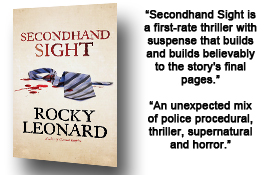 Author of the book What Happens When We Die?, Dr. Sam Parnia has conducted extensive research into the near death experience. Together with Dr. Pim van Lommel and Dr. Peter Fenwick, Parnia has studied patients who suffered from cardiac arrest and experienced clinical death in an attempt to scientifically obtain data about and study NDEs.
Author of the book What Happens When We Die?, Dr. Sam Parnia has conducted extensive research into the near death experience. Together with Dr. Pim van Lommel and Dr. Peter Fenwick, Parnia has studied patients who suffered from cardiac arrest and experienced clinical death in an attempt to scientifically obtain data about and study NDEs.
Dr. Parnia said, “If you look through science what’s amazing is the things that any group of scientists often believe has been completely black-and-white and completely correct — if you look 50 years later, most if not all of them have been changed. And I think with this subject [the near death experience] as well, in the future we will find actually mind may be a separate scientific entity and can continue functioning after the end of life when the brain stops working. That will have huge implications for all of mankind, there’s no doubt about it. It will revolutionize our old way of thinking and open up a whole new field of science that has as of yet been undiscovered.”
Speaking of “undiscovered” things that science cannot explain…
Vicki Noratuk was scared and confused. She could see the emergency room doctors working diligently to save their patient, badly injured in a car accident. She heard them say, “We can’t bring her back” several times. She watched as the “crash cart” was brought in to try and save the body on the table. Vicki struggled to grasp what was happening. She couldn’t believe what she was seeing. She couldn’t believe she was seeing.
Vicki explains, “I’ve never seen anything. No light in the shadows, no nothing. People ask if I see black. No. I do not see black. I do not see anything at all. And in my dreams, I don’t see any visual impressions…just taste touch sound and smell, but no visual impressions of anything.”
Vicki has Longview no visual memories, no concept of color, no idea how her own reflection would appear in a mirror. She has been blind since infancy due to excess oxygen given after her premature birth. She was frightened. Suddenly being able to see confused her. Slowly she came to the realization the body on the table was hers. She watched with detached disinterest while doctors scrambled to save her life.
Vicki represents the quintessential case study for the philosophical exercise known as “Mary’s room”, where a subject is placed in a black and white room and only allowed to view the world through a black-and-white monitor. The theoretical question posed by the “experiment” is to ask what will happen when Mary is released from the room or given a color television monitor? Will her scientific knowledge of color allow her to learn from the new experience?
Vicki’s real-life situation goes one giant step further in that theoretical exercise – she has no ability to view anything.
heavenward And she never has.
Yet somehow, when she nearly died in that emergency room at Harbor View Hospital, Vicky claims to have experienced sight for the only time in her life. When she knew it was her body that was “dead”, Vicki says she left the hospital through the ceiling and floated over the city.
She said, “It was wonderful to be out there and be free, of not being afraid of bumping into anything, and I knew where I was going….as I was approaching this area there were trees and birds and quite a few people, but they were all made out of light. And I could see. It was incredibly beautiful and I was overwhelmed by that experience because I couldn’t really imagine what light was like.”
That is the key, the unanswerable question — how could Vicki’s dying brain conjure up false visual images from memories when she had no visual memories from which to draw — not even dreams?

Speak Your Mind